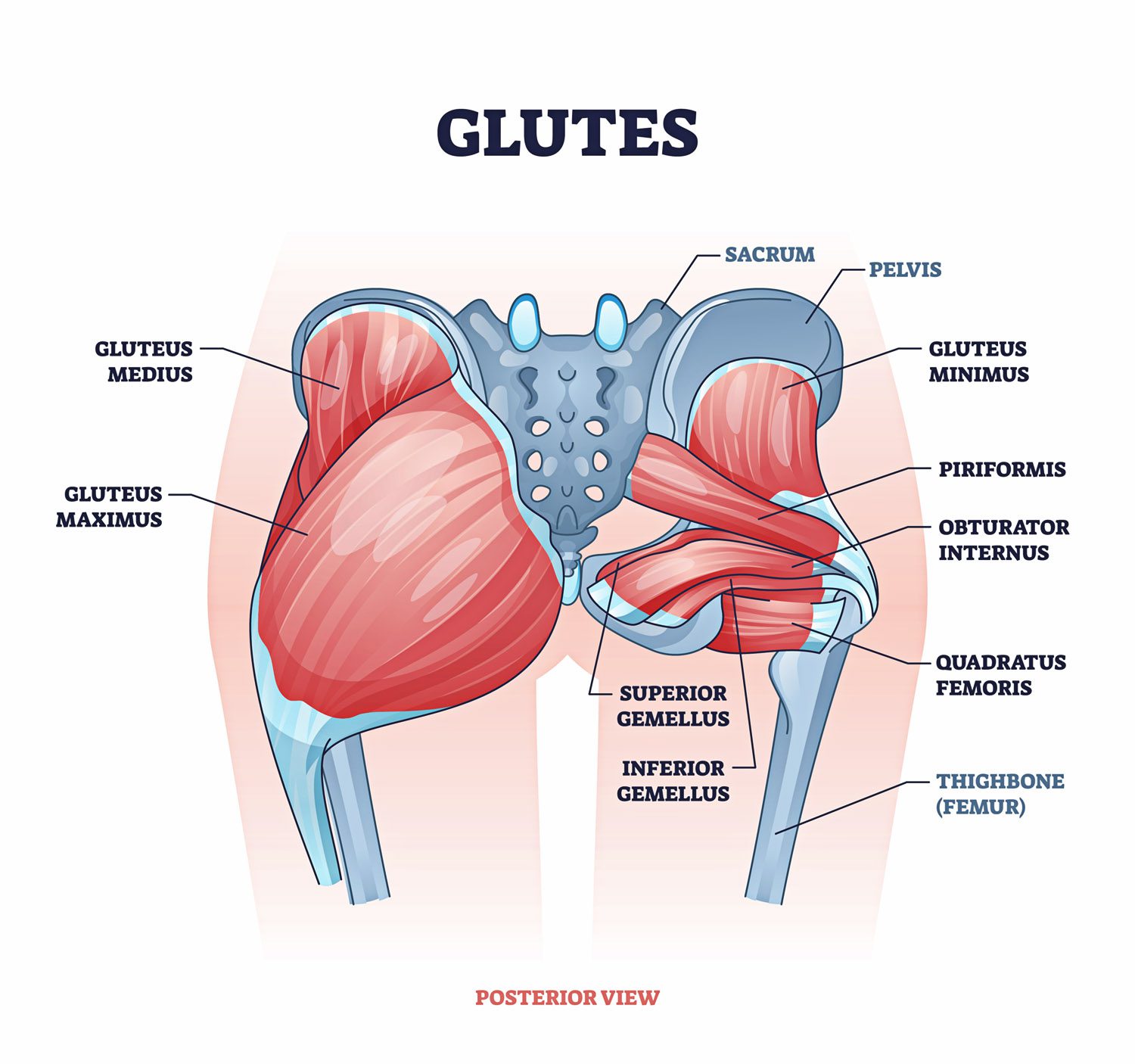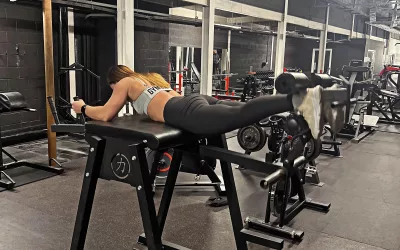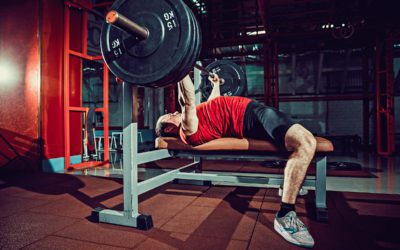The Ultimate Guide to Lunges: Queen of all Glute Exercises
TOPIC: Exercise guides | Strength & Conditioning
Your glutes are the largest muscle group in your body. They’re responsible for almost everything your legs do—walking, running, jumping, squatting, lunging, and just standing upright. As far as moving through space goes, strong glutes are the bedrock of overall athleticism & the lunge is the queen of all glute exercises.

Written By
lily frei
Lily is TrainHeroic’s Marketing Content Creator and a CF-L1 — she was a successful freelance marketer for the functional fitness industry until being scooped up by TrainHeroic. An uncommon combo of bookish, artsy word-nerd and lifelong athlete, Lily is passionately devoted to weightlifting, CrossFit, yoga, dance, and aerial acrobatics.
Insta
Master Lunges for Powerful Glutes
The most accomplished athletes have well-rounded glutes, especially if their sport demands a lot of explosive hip movement. Olympic gymnasts, sprinters, weightlifters, NFL athletes, and professional cyclists all have similarly intense demands required from their lower trunks.
Full glutes have been featured in ancient works of art for centuries and as a more recent obsession in pop culture. It’s impossible to miss when someone is gluteal-endowed and we may be hard-wired to notice:
“It stands to reason that both males and females were attracted to nice glutes, instinctively making the connection to big, strong glutes and survival, reproduction, hunting and protection.”
Bret Contreras, Glen Cordoza (2019); The Glute Lab.
So how do you build yourself one of those coveted plump rumps that men, women, and nonbinary people alike pretend not to side-eye? First of all, if you don’t want a bigger butt, you’re lying (even if you’ve already got one), so let’s accept that fact. Second, it pays to understand your anatomy.
Glute Anatomy Refresher
Your glutes are made up of three major muscles that articulate your hip joints in several different directions:
- Abduction (moving the leg away from the body, out to the side)
- Extension (pulling the leg out behind you when running)
- External rotation (butterfly pose or frog stretch)
- Internal rotation (hockey goalie stance)
The largest and most known, gluteus maximus, does the bulk of the work and is the main muscle we have to thank for keeping us bipedal. Its number one job is to bring your body back to an upright position after stooping, crouching, or squatting.
The second largest muscle, the gluteus medius, is most responsible for internal and external rotation of the hip, while the smaller gluteus minimus helps to abduct the thigh.

Why Lunge?
Lunges hit all of the major muscles in your posterior chain: quads, hamstrings, calves, and of course, your glutes. Thinking back to our anatomy, lunges are the exact up-and-down movement that the glutes are in charge of. Weight training with lunges adds load to your glutes to make them stronger in their most purposeful movement: pushing your legs against the ground.
Lunges are excellent for unilateral strength—they also challenge your hip and core stability. They’re the perfect bodyweight movement to burn out your butt for accessory work, but if you want real glute hypertrophy and soreness, weighted lunges are the way to go.
Start working in a few sets of heavier or high-rep lunges once a week and check that dump truck in the mirror again after a few months. Use our guide and try every lunge variation out there to keep things spicy.
How to Do Barbell Reverse Lunges
Points of Performance
Lunges are super versatile and can be done without any equipment or holding whatever weight you have available. The barbell lunge is pretty basic so we’ll focus on that to break down the form, then cover other variations later.
No matter where you hold weight, your core should stay tight and stable.
If you start to wobble, or your back loses tension and your core turns to mashed potatoes, scale the weight down to something more manageable.
Forward vs. Reverse?
Both variations work the entire posterior chain, but there’s a slight emphasis on the quads with forward lunges and a slight emphasis on the glutes with reverse lunges. For our booty-building purposes, we encourage step-back or reverse lunges.
Setup
Unrack the barbell on your back like you would for a back squat. With your feet about hip-width stance, keep your chest up and brace your core to make sure you’re not arching into your low back. Maintain a neutral spine with your eyes forward.
Lunge
Step one leg back landing on the ball of your foot and allow your back knee to kiss the ground. You only need to go back far enough to create about a 90 degree angle with your bent front leg. Most of your weight should be in that front leg, while the rear leg is mainly there for balance. Keep your front knee tracking in line with your toes, don’t let it cave in or flare out. Maintain an upright torso, no leaning.
Recover
Press into the ground with your front leg (feeling your glutes fire) and bring the rear leg up to meet the front, coming back up to a standing position. Repeat for reps on the same side, or switch legs to alternate.
Lunge Variations (change how you hold the weight)
Lunges are a natural movement that don’t require equipment. But if you want to hold weight for stronger glutes or mix up the way you lunge, there are a ton of ways to do it. Pretty much any of the ways to hold weight below can be combined with any of the ways to lunge, so pick your poison.
Suitcase Lunge
As the name implies, hold a dumbbell, kettlebell, or soup can in each hand down at your sides, like you’re carrying two suitcases. Like a farmer’s carry, this variation works the stabilizers in your shoulders as well.
Back Rack Lunges
Hold the weight on your back like you would for a back squat (reference our Points of Performance above). Feel free to try this one using a sandbag, family pet, or small child.
Front Rack Lunges
Hold a barbell, kettlebells, or dumbbells on your shoulders like you would for a front squat or when catching a power clean. Keep your elbows pointing relatively forward to support the weight.
Bowtie Lunges
This cutely-named variation is reminiscent of the goblet squat and a good way to lunge with lighter weight. Hold a single dumbbell under your chin, gripping each head in one hand (which looks like you’re wearing a bow tie).
Single Arm Lunges
Hold weight in one hand at a time for any variation of your choice. This will challenge your midline stability and balance more than supporting weight equally in both hands.
Overhead Lunges
Hold a weight overhead with one arm at a time or both. This is a more advanced variation, so be sure to keep your ribs down and core tight to keep from arching your back or overextending your shoulders.
Find Your Perfect Training Plan
Sometimes all you need to reach your destination on your fitness journey is an expert guide. Look no further, we've got you covered. Browse from thousands of programs for any goal and every type of athlete.
Try any programming subscription FREE for 7 days!
Related Articles
You May Also Like...
A Beginner’s Guide to Steel Mace Training
Think you’ve mastered kettlebells? Meet the steel mace — the brutal, offset weapon that forces your body into three-dimensional stability, grip work, and rotational strength. Ancient tool. Modern performance.Written Byjesse grund Jesse Grund’s passion is simple: coach...
What’s a Reverse Hyper & Why Should You Use It?
Have you seen people on that weird machine, kicking back with both legs like some kind of superhero donkey?? The reverse hyperextension is actually an extremely useful movement for building posterior chain strength, and it pays to understand it.Written Byfred ormerod...
The Best Bench Press Warm Up Strategy
We get it. You’re pressed for time in the gym. But skipping the warm up is the surest way to underperform and risk injury. This 3D approach to your bench press warm up not only allows you to lift more weight, but also ensures the long-term health of your shoulder...
A Beginner’s Guide to Steel Mace Training
Author: Jesse Grund
Mace training will make you a better mover without it’s not confining you to a fixed space or predetermined range of motion. Second, it’s an offset load with 80 to 90 percent of the weight in the head. You’re also constantly having to resist rotation, which creates greater core engagement.
What’s a Reverse Hyper & Why Should You Use It?
Have you seen people on that weird machine, kicking back with both legs like some kind of superhero donkey?? The reverse hyperextension is actually an extremely useful movement for building posterior chain strength, and it pays to understand it.Written Byfred ormerod...

Want more training content?
Subscribe
For Coaches
For Athletes
About
Support
Training Lab
Access the latest articles, reviews, and case studies from the top strength and conditioning minds in the TH Training Lab!
Made with love, sweat, protein isolate and hard work in Denver, CO
© 2024 TrainHeroic, Inc. All rights reserved.





